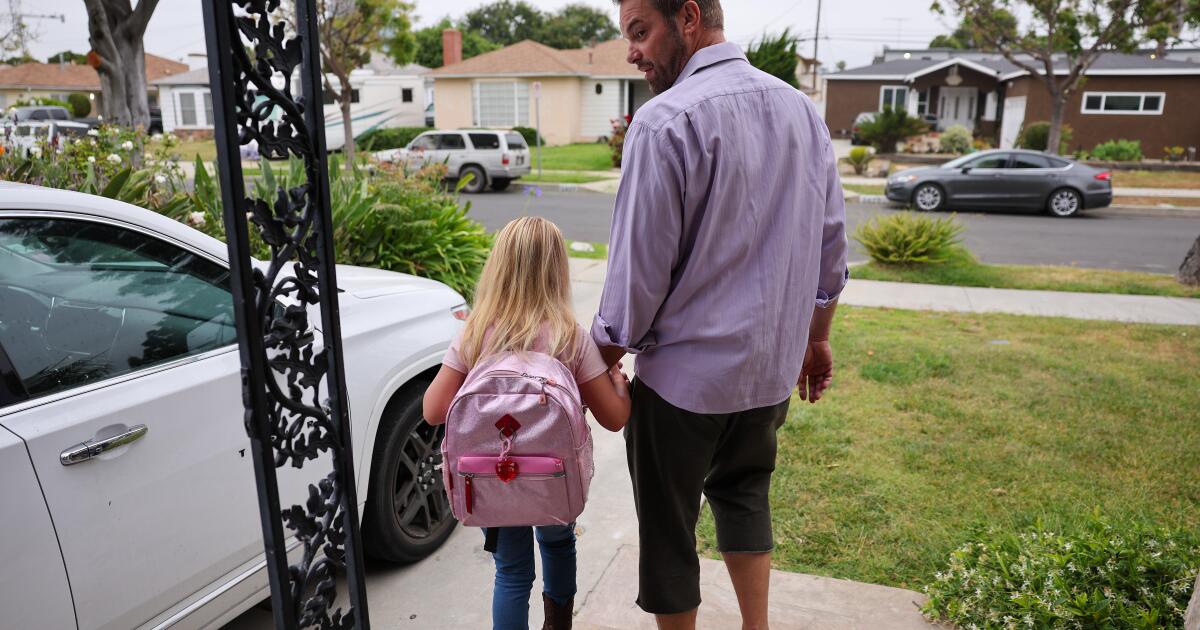
It’s hard to say where crime is headed in Los Angeles these days.
The Police Department has stopped posting crime numbers on its public website after implementing a new recordkeeping system and changing the way it counts burglaries, assaults and other crimes.
Officials say these changes will more accurately reflect the level of public safety across the city, and efforts are underway to put the statistics back online for the public. But for months, there has been no easy way to track crime trends in the city.
Police are still providing updated numbers to city officials at their request, and interim Chief Dominic Choi reports weekly to the Police Commission on the status of crime.
The department used to release weekly crime reports detailing the number of crimes and arrests for all violent and property crime categories from the previous week to the year-to-date for the entire city. But the familiar multicolored tables have now disappeared from its site.
LAPD officials added a disclaimer to the site’s crime page about changes to the department’s national incident-based reporting system that will bring it into line with federal guidelines aimed at obtaining more detailed crime data.
“We hope to have both the open data portal and crime statistics up and running in the next few months,” Lt. Christopher Chase of the CompStat division said in an email to the Times. “It’s a huge task, but there are a lot of smart people working on it!”
In her latest briefing on Tuesday, Choi highlighted data that showed overall violent crime — which includes murder, robbery, rape and aggravated assault — is basically unchanged from the same period last year, while property crime fell by about 3%.
Choi told the commission that although non-fatal shootings have decreased citywide, murders have increased by about 11% compared to the first half of 2023. He said there is no single explanation: “There is no trend of any gang feud or any particular race war.” The increased bloodshed has reversed a trend seen in many large U.S. cities, which have seen a decrease in murders this year.
Of the LAPD’s four geographic bureaus, South L.A. has had the most homicides this year: 47, which is 14 more than the same period in 2023. Alarmingly, Choi said, the city has seen a nearly 18% increase in robberies — an additional 585 incidents — compared to the same period last year, with the Rampart, Southwest and Wilshire areas seeing the biggest increases.
The downtown area saw the biggest increase in commercial burglaries, with 106 more incidents, up nearly 15% from the first half of last year. Residential burglaries also increased, especially in the Wilshire and Hollywood areas, while Foothill saw the biggest increase in stolen vehicles, with 153 additional burglaries.
Criminologists and others who study crime have long cautioned about the reliability of statistics reported by police agencies, warning that they can be manipulated for political purposes and that they often provide only a narrow view of the ups and downs of violent crime, which has been trending downward for decades.
As part of efforts at transparency and uniformity, departments across the country are gradually adopting the FBI’s National Incident-Based Reporting System, which was launched in 1988 and aims to collect data on a broad range of crimes.
Liberty Vittert, a data science professor at Washington University in St. Louis, said the LAPD was one of the last large urban agencies to take this step.
The old system could overlook some crimes because it only recorded the most serious crime in the incident. For example, robbery-murder only recorded the murder. In the FBI system, the two acts are counted separately.
Although most agencies that made the change to the system reported “increasing troubles,” Vitter said he found it odd that the LAPD stopped reporting annual crime statistics. He said that despite all their limitations, such reports are still a vital resource for the public and elected officials.
Vittert said it’s not complicated to “make year-to-year comparisons” from the LAPD’s old system to the new one. “I wouldn’t say it’s like apples and oranges. It’s more like red apples and green apples.”
The statistical reporting problems first surfaced in early March, when the LAPD unveiled its new records management system, which department officials said would replace several outdated computer programs. Officers at the Central Bureau were the first to work with the new system.
Officials said the change includes going paperless, with officers now able to fill out crime reports and field interview cards on a native iPhone application designed for the department by Motorola. Previously, officers had to go back to their police station to type up reports — a time-consuming process that kept them from getting out on the streets to do police work, said John McMahon, deputy chief of the Information Technology Bureau.
McMahon acknowledged there would be some “hiccups” in getting the department to adopt the new way of working, but ultimately the system would enhance efficiency and productivity.
Department officials said they conducted site visits in Philadelphia and New York, and also recently updated their records systems.
But the changes have also been met with skepticism from police critics, one of whom argued at a commission meeting this year that the “aggregation” of disparate data sources has historically been used to justify more policing of communities of color.
“We need to ask ourselves, who does this efficiency serve? What purpose does it serve?” Mateos Kidane of the Stop LAPD Spying Coalition said at a meeting in March.
















